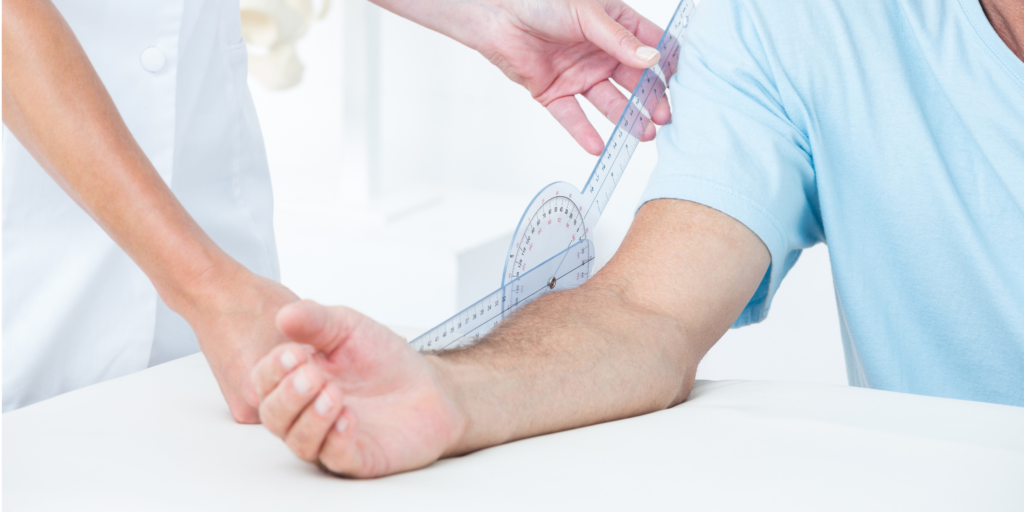Range of motion is commonly included as part of an objective exam when assessing joint function. This page was designed to provide suggestions on how to obtain range of motion information via telehealth in as accurate a manner as feasible.
Consider the following suggestions when assessing range of motion (ROM) via telehealth:
- ROM can be assessed by performing a functional activity that can be repeated in a later session.
- ROM can also be assessed by examining individual joints in isolation, although this may be more challenging via telehealth than in person. Consider having the patient stabilize other joints if possible. For example, assess a patient’s knee flexion by having them sit in a chair to stabilise the hip.
- Be sure to document as much detail as possible about how the ROM was assessed (i.e. body position, any equipment, etc) to facilitate reproducibility in future sessions.
- Consider the camera angles and document if it will be important for reassessment (e.g. sagittal or coronal view)
Options for Measuring Range of Motion via Telehealth
| Method | Benefits | Drawbacks | Notes |
|---|---|---|---|
| Visual (eye ball) | Easy, minimal time requirements | Lacks accuracy | Best if precise ROM is not required. Can be useful to compare relative motion compared to contralateral side. |
| Place a goniometer on the computer screen | Increased accuracy with a good camera angle and picture. Moderate time requirements. | Increased time to position patient as dependent on camera angle and picture. May need to take screen shot to measure | Good choice if changes to ROM over time are expected, and more accurate measurement is required. |
| Use goniometer software (e.g https://www.kinovea.org) | Increased accuracy. Moderate time requirements. | Increased time as have to position patient and access the protractor tool | Good if changes to ROM over time are expected and accurate measurement is required |
Next – Strength
